Filter by

Reinventing Los Angeles :nature and community in the global city
Describes how water politics, cars and freeways, and immigration and globalization have shaped Los Angeles, and how innovative social movements are working to make a more livable and sustainable city.OCLC-licensed vendor bibliographic record.
- Edition
- -
- ISBN/ISSN
- 9780262274128
- Collation
- 1 online resource (viii, 430 pages, 16 unnumbered pages of plates) :illustrations.
- Series Title
- -
- Call Number
- -
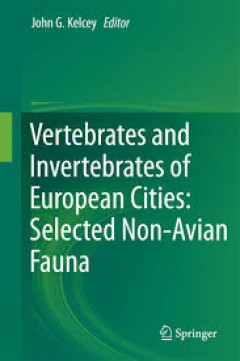
Vertebrates and Invertebrates of European Cities:Selected Non-Avian Fauna
Vertebrates and Invertebrates of European Cities: Selected Non-Avian Fauna is the first known account of the vertebrate and invertebrate fauna of several cities in Europe and throughout the rest of the world. It excludes birds, which are described in a companion volume. The book contains eleven chapters about nine cities distributed throughout Europe. The chapters start with the history of the …
- Edition
- -
- ISBN/ISSN
- 978-1-4939-1698-6
- Collation
- -
- Series Title
- -
- Call Number
- -
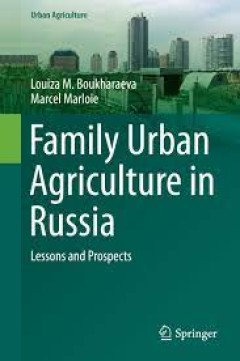
Family Urban Agriculture in Russia Lessons and Prospects
The book results from research carried out by the authors since 1999 on urban gardening collectives in Russia, then from the extension of this research towards collective urban gardening in France, with some investigations in other European Union Member States and Brazil. This research was carried out within the framework of Kazan University (currently, the Institute of Administration and Terri…
- Edition
- -
- ISBN/ISSN
- 978-3-319-11614-3
- Collation
- XVII, 215
- Series Title
- -
- Call Number
- -

Vertebrates and Invertebrates of European Cities:Selected Non-Avian Fauna
Vertebrates and Invertebrates of European Cities: Selected Non-Avian Fauna is the first known account of the vertebrate and invertebrate fauna of several cities in Europe and throughout the rest of the world. It excludes birds, which are described in a companion volume. The book contains eleven chapters about nine cities distributed throughout Europe. The chapters start with the history of the …
- Edition
- -
- ISBN/ISSN
- 978-1-4939-1698-6
- Collation
- XX, 700
- Series Title
- -
- Call Number
- -
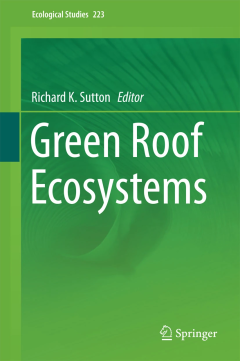
Green Roof Ecosystems
This book provides an up-to-date coverage of green (vegetated) roof research, design, and management from an ecosystem perspective. It reviews, explains, and poses questions about monitoring, substrate, living components and the abiotic, biotic and cultural aspects connecting green roofs to the fields of community, landscape and urban ecology. The work contains examples of green roof venues tha…
- Edition
- -
- ISBN/ISSN
- 978-3-319-14982-0
- Collation
- XII, 447
- Series Title
- -
- Call Number
- 574.526 GRE
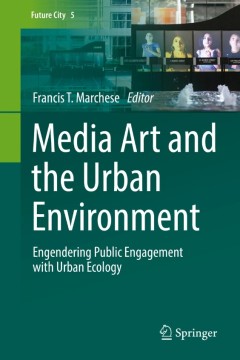
Media Art and the Urban Environment; Engendering Public Engagement with Urban…
This text formally appraises the innovative ways new media artists engage urban ecology. Highlighting the role of artists as agents of technological change, the work reviews new modes of seeing, representing and connecting within the urban setting. The book describes how technology can be exploited in order to create artworks that transcend the technology’s original purpose, thus expanding th…
- Edition
- 1
- ISBN/ISSN
- 978-3-319-15152-6
- Collation
- -
- Series Title
- Future City
- Call Number
- XIV, 299

Media Art and the Urban Environment:Engendering Public Engagement with Urban …
This text formally appraises the innovative ways new media artists engage urban ecology. Highlighting the role of artists as agents of technological change, the work reviews new modes of seeing, representing and connecting within the urban setting. The book describes how technology can be exploited in order to create artworks that transcend the technology’s original purpose, thus expanding th…
- Edition
- 1
- ISBN/ISSN
- 978-3-319-15152-6
- Collation
- -
- Series Title
- Future City
- Call Number
- XIV, 299
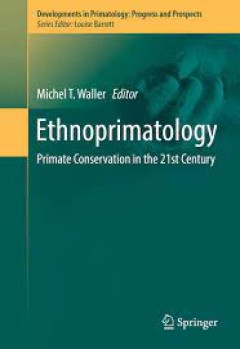
Ethnoprimatology Primate Conservation in the 21st Century
The list of challenges facing nonhuman primates in the 21st century is a long one. The expansion of palm oil plantations to feed a growing consumer class is eating away at ape and monkey habitats in Southeast Asia and Central Africa. Lemurs are hunted for food in the poorest parts of Madagascar while monkeys are used as medicine in Brazil. Traditional cultural beliefs are maintaining demand for…
- Edition
- -
- ISBN/ISSN
- 978-3-319-30469-4
- Collation
- 35 b/w illustrations, 31 illustrations in colour
- Series Title
- -
- Call Number
- -
 Computer Science, Information & General Works
Computer Science, Information & General Works  Philosophy & Psychology
Philosophy & Psychology  Religion
Religion  Social Sciences
Social Sciences  Language
Language  Pure Science
Pure Science  Applied Sciences
Applied Sciences  Art & Recreation
Art & Recreation  Literature
Literature  History & Geography
History & Geography